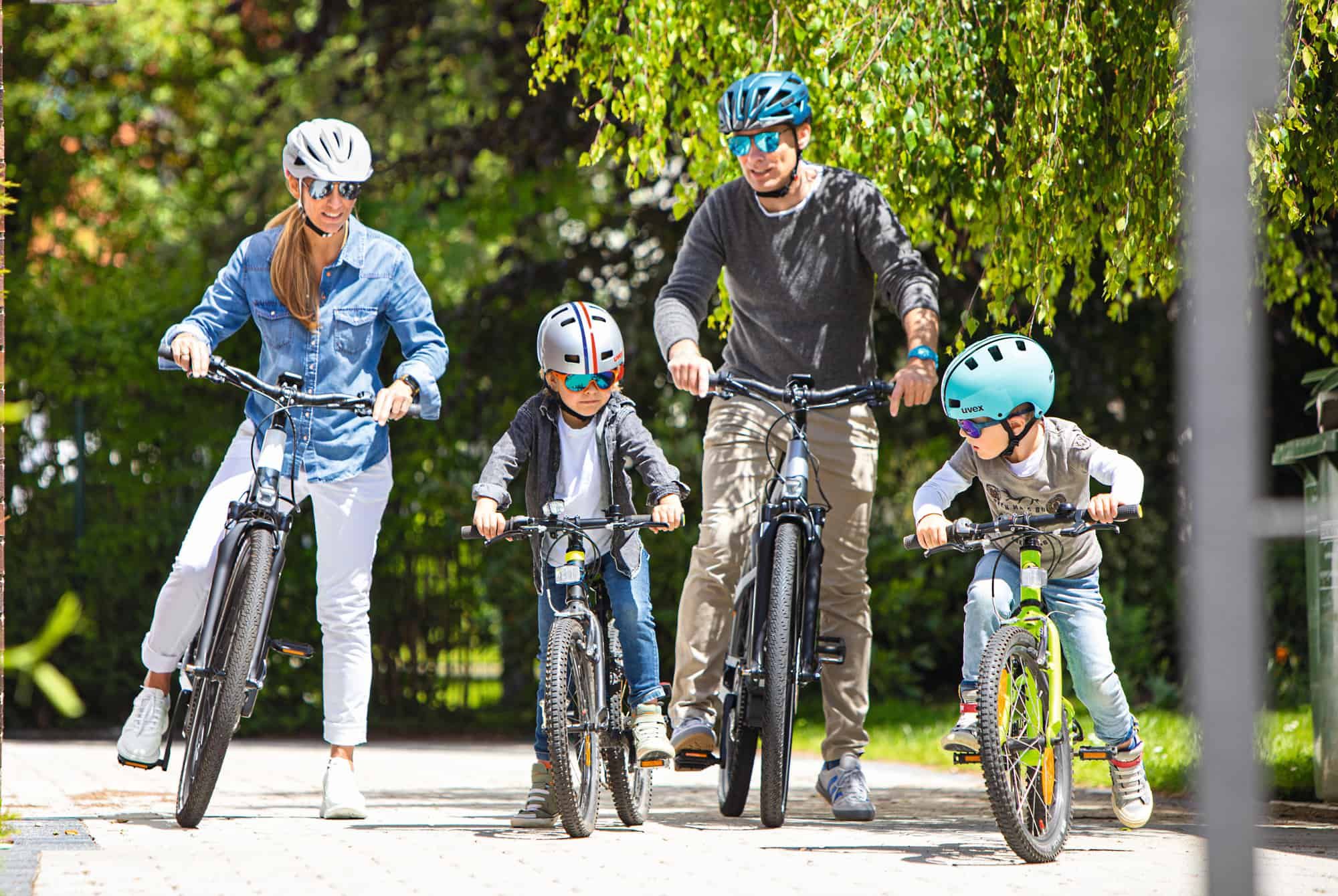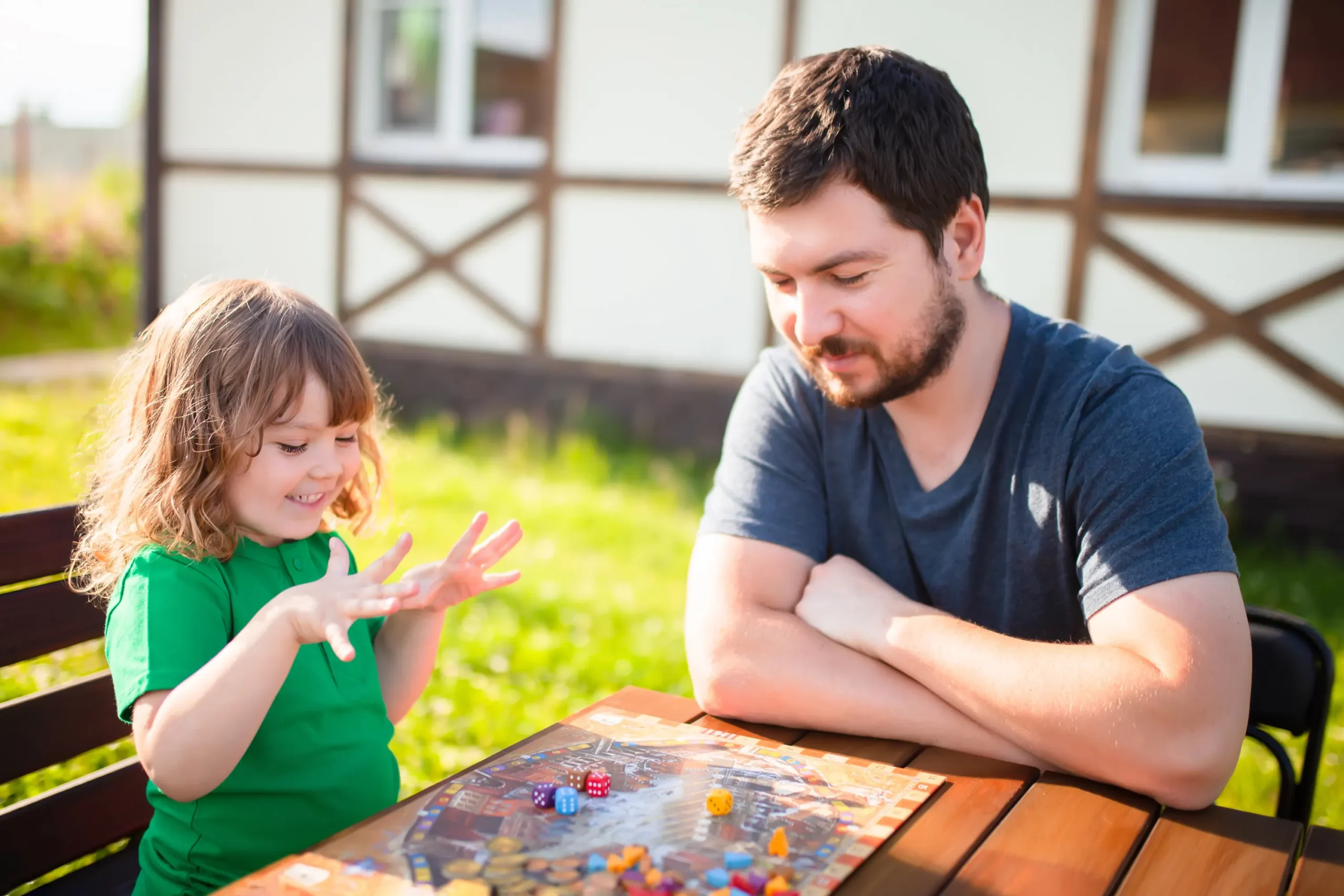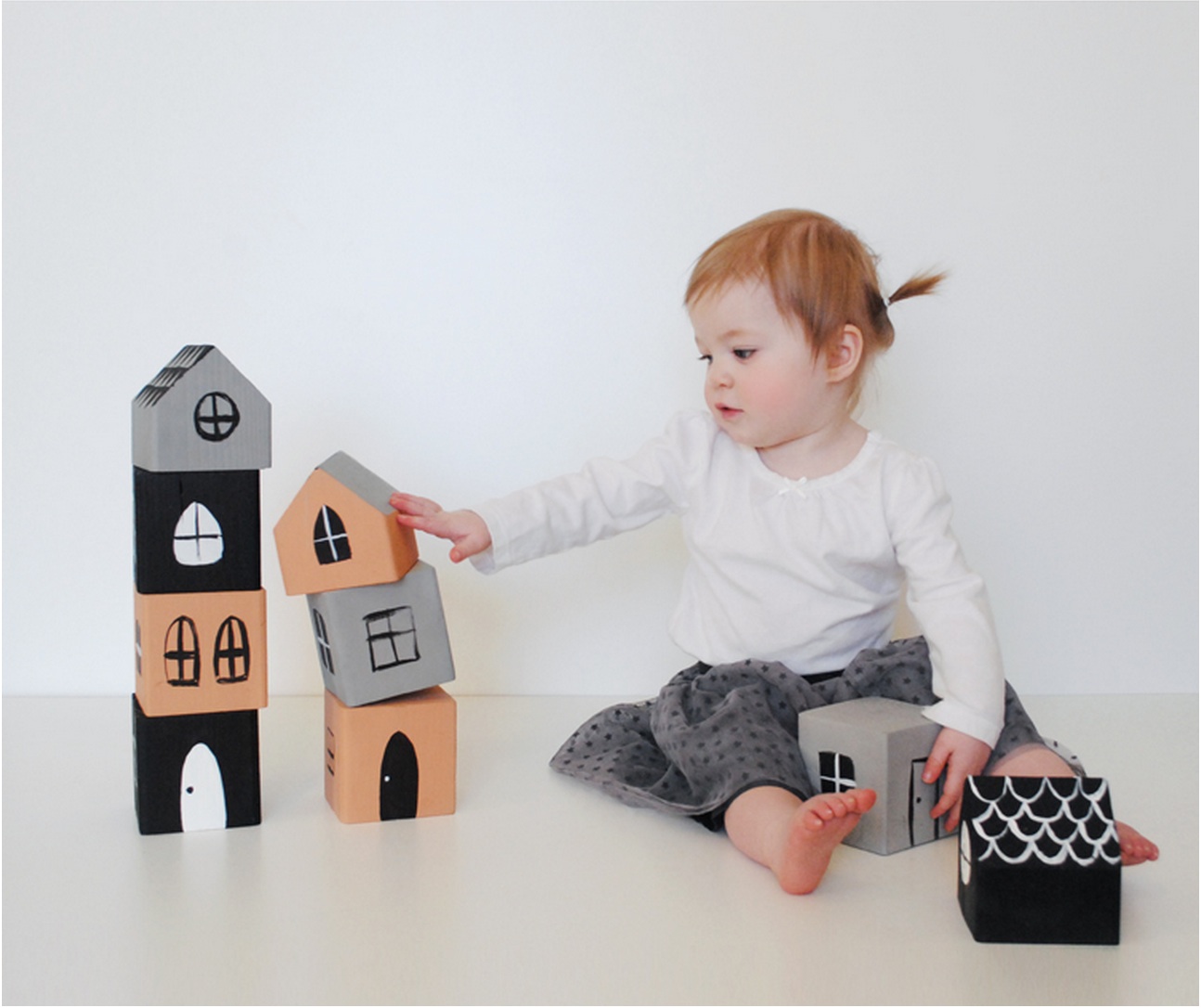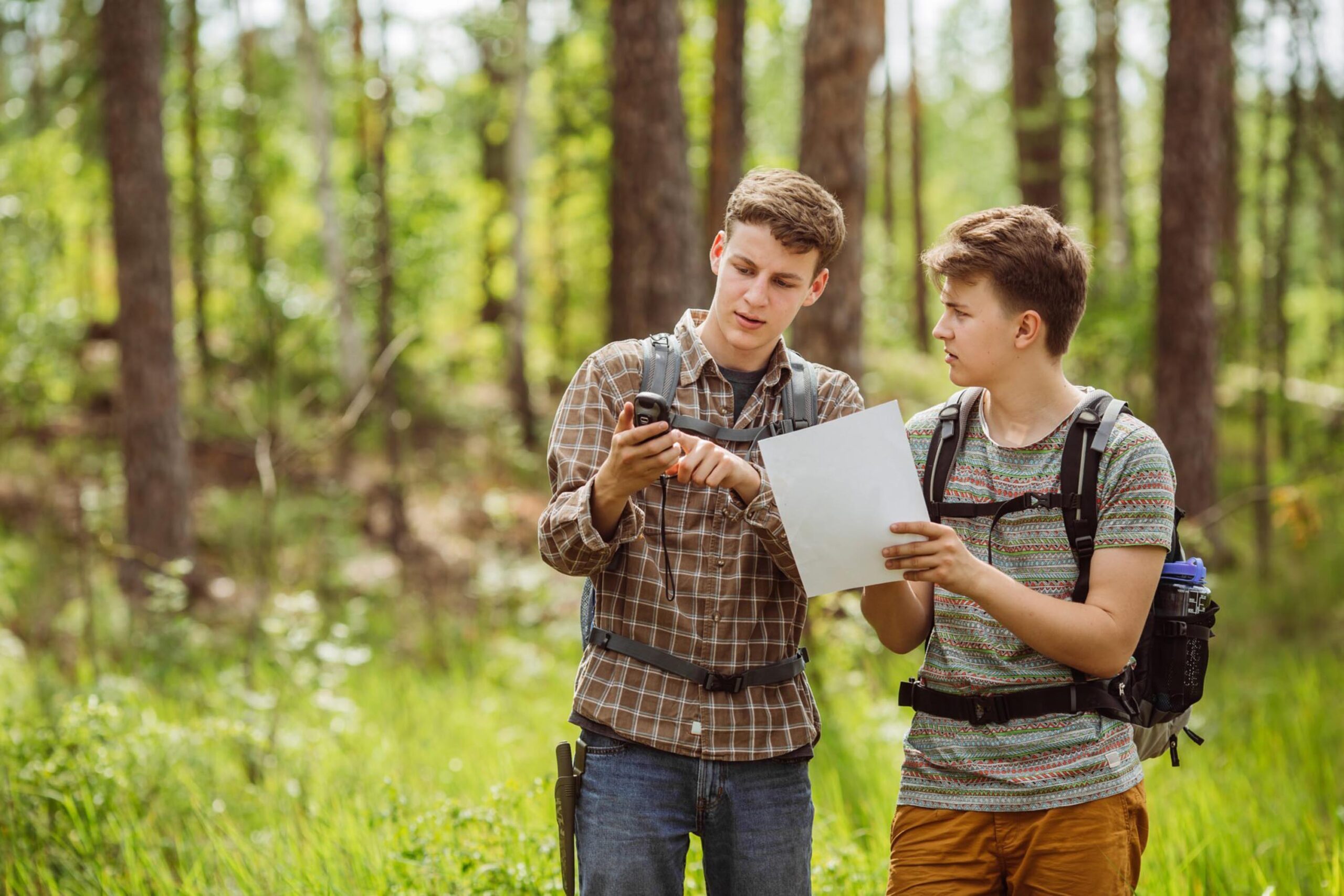
The Bicycle Diaries: Teaching Your Kid To Ride A Bike
Learning to ride a bike is like a rite of passage for kids, but it can be fraught with wobbles and tumbles. Studies show that balance bikes can significantly improve biking skills in children compared to training wheels.
This blog will guide you through transforming your child’s first bike experience into a smooth adventure, sans the skinned knees. Get ready for proud moments on two wheels!
Key Takeaways
- Balance bikes improve children’s biking skills more effectively than training wheels.
- A proper bike fit and a correctly fitted helmet are crucial for your child’s safety when learning to ride.
- Transitioning to pedals should only happen after your child has mastered balance using the Sit, Run, and Glide technique without pedals.
- Utilize trainers or other tools if a child struggles with pedal motion; patience is key to their progress.
- Safety tips like wearing bright clothing, using hand signals, riding on sidewalks, and being cautious around cars ensure safer bike riding experiences for kids.
Assessing Your Child’s Readiness for Bike Riding
Check if your child has the physical coordination to handle a bike. They should be able to walk steadily, run without falling often, and climb onto furniture with ease. These skills are important because they show that kids have the basic motor functions needed for controlling a bicycle.
Look also at their ability to follow instructions and make decisions quickly; when riding, children will need to think on their feet as they navigate paths and steer clear of obstacles.
Observe whether your child shows interest in learning how to ride or is curious about bikes. This natural curiosity can be a great motivator during the learning process. Ensure they understand what bike riding involves by watching other cyclists or by explaining how pedals, handlebars, and brakes work together to move and stop the bike safely.
Gauge their reaction – excitement could indicate that they feel ready while hesitation may require more time or encouragement before starting lessons.
Preparing for Bike Lessons
Ensuring a proper bike fit for your child is key to their safety and comfort during bike lessons. Additionally, having the right helmet that fits well is crucial for protecting your child’s head while riding.
Ensuring a Proper Bike Fit for Your Child
Finding the right bike size for your kid is as vital as teaching them to ride. Check that they can touch the ground with their feet when standing over the top tube. This guarantees stability and control, which are crucial for building confidence.
Seat height should allow a slight bend at the knee when their foot is on the lowest pedal position; this helps avoid strain on little legs.
Next, adjust handlebars so they reach without hunching over, creating a comfortable grip aligned with shoulder width. A proper fit boosts enjoyment and safety while they learn balance and coordination on two wheels, paving the way toward mastering bike riding essentials like steering and stopping.
Now let’s talk about another important aspect of biking—safety gear. Moving forward, we’ll discuss why wearing a helmet is non-negotiable for every young cyclist.
Importance of a Proper Helmet
A proper helmet keeps your child’s head safe in case of falls or collisions while bike-riding. It acts like a shield, absorbing the shock that could otherwise cause serious injury to the brain.
Make sure the helmet fits correctly; it should rest level on the forehead and not tilt back, with no more than two fingers’ width above eyebrows. Snug chin straps are non-negotiable—they prevent the helmet from slipping during rides or if an accident occurs.
Choosing a bicycle helmet isn’t just about comfort; it’s also about life-saving protection. Helmets designed specifically for biking incorporate features that protect against specific impacts common in bike accidents.
Always look for a label showing that the helmet meets safety standards and replace any helmet after a crash, even if there’s no visible damage—its ability to absorb another impact might be compromised.
Your child’s safety is paramount, so investing in a quality bicycle helmet is essential before they hit the road or join friends on bike lanes.
Turning a Bike into a Temporary Balance Bike
Remove the pedals and adjust the seat height to turn your child’s bike into a temporary balance bike. Introduce the sit and walk method to help them get comfortable with balancing before adding back the pedals.
Removing the Pedals
To transform your child’s bike into a balance bicycle, start by detaching the pedals. Grab a wrench and loosen the bolts on the crank arms in a counter-clockwise direction until they come off.
Keep these parts together in a safe place; you’ll need them again once your kiddo has nailed balancing.
Lowering the seat helps little learners rest their feet flat on the ground. Without pedals, they can easily push off and glide, building stability and confidence one step at a time.
Remember to check other parts for safety—tighten bolts, inspect tire pressure, and ensure brakes are working perfectly if equipped with hand brakes or coaster brakes.
Adjusting the Seat Height
To adjust the seat height, start by having your child sit on the bike with their feet flat on the ground. Ensure there is no knee bend – their legs should be straight. This position will help them feel stable and in control while sitting on the saddle.
It’s crucial for safety that they can easily reach the ground when stopping or starting. Once your child has mastered pedaling confidently, you can raise the seat slightly so they can touch the ground with just their toes, ensuring a slight knee bend which gives them enough power for effective pedaling.
After adjusting the seat height to allow your child to comfortably reach the ground and pedal efficiently, it’s important to maintain a safe environment for them during practice sessions.
Introducing Sit and Walk Method
After adjusting the seat height and removing the pedals, the “Sit and Walk Method” can be introduced to teach your child how to ride a bike without training wheels. This method involves having the child sit on the saddle with both feet flat on the ground and then using their feet to walk while sitting on the bike.
It allows them to gain a sense of balance and control over the bike before incorporating pedaling into the process.
When implementing this approach, it’s important for parents or guardians to provide gentle guidance as children gradually understand how to use their feet for propulsion while maintaining balance.
Mastering Balance
Practice the sit, run, and glide technique to help your child master balance on the bike. Encourage them to focus on their body position and movement while gliding without pedaling.
To learn more about teaching your kid to ride a bike, keep reading!
Sit, Run, and Glide Technique
To help your child master balance on the bike, teach them the “Sit, Run, and Glide” technique. Have your child sit on the saddle with both feet flat on the ground. Then, encourage them to run while sitting on the bike, allowing it to glide forward smoothly without pedaling.
This method helps children understand how to steer and balance without relying on pedals for momentum.
As they become more comfortable with gliding, encourage them to lift their feet off the ground and coast for short distances. Practice this technique in a safe environment until they feel confident balancing without support from their feet.
Importance of Not Rushing the Pedals
Mastering the Sit, Run, and Glide technique sets the stage for an essential aspect of teaching a child to ride a bike – not rushing the pedal installation. It’s crucial to resist the urge to reattach the pedals until your child has confidently achieved balance, steering, and gliding for extended distances.
Rushing this step can frustrate your child and hinder their progress. Encouraging mastery before adding pedals will build confidence and make transitioning back to pedaling much smoother.
It is essential to remember that patience is key during this process of learning. Children need time to develop their skills without feeling pressured or rushed. Not rushing into pedal attachment allows children to gain confidence in their newly acquired balance skills, setting them up for success when they’re ready to take on pedaling.
Transitioning Back to a Pedal Bike
As your child progresses, you can reattach the pedals and adjust the saddle height for them to gain momentum and practice putting their feet on the pedals – it’s an exciting phase in their bike riding journey! Read on to learn more about mastering balance and essential safety tips for kids.
Pedals Re-installation
To re-install the pedals, begin by threading the left pedal counterclockwise into the left crank arm. Ensure it’s tightened securely by using a wrench and turning it in that direction.
Then, thread the right pedal clockwise into the right crank arm and tighten it firmly with a wrench. Remember to adjust the saddle height for your child’s comfort after putting back on the pedals, ensuring they can stop and start their bike safely with their feet.
Adjusting properly will help prevent injury from losing balance or needing to reach too far down when stopping abruptly during those first few tries at riding with pedals.
Adjusting the Saddle Height
To adjust the saddle height for your child’s bike, ensure that when they sit on the saddle, their feet can touch the ground flat. This allows them to stabilize themselves easily when starting and stopping.
Moreover, having a low saddle also prevents any knee strain and ensures comfortable learning progress. As your child becomes more confident in pedaling and balancing, consider raising the seat so they can touch the ground with solid tip-toes rather than fully flat feet.
It is important to exercise patience during this process as it may take some trial and error to find the perfect height that balances comfort with stability for your child. A lightweight bike paired with proper saddle adjustment will provide an ideal setup for smooth learning without added strain or discomfort.
Progressing to Momentum Gain
To progress to momentum gain, it’s time to reintroduce the pedals to your child’s bike. Start by securely re-installing the pedals following the specific threading directions for the left and right sides.
Once installed, adjust the saddle height for comfort, keeping it low enough for your kid to effortlessly stop and start with their feet before fully relying on pedal power. Introduce them gradually to putting their feet on the pedals while maintaining balance, allowing them to build confidence in pedaling without losing stability.
Remember that focusing on balance and steering will ultimately lead to a smoother transition into pedaling.
After mastering balancing and steering techniques during gliding sessions, encourage your child to put their feet on the pedals while maintaining velocity. Take special care not rushing this step until they exhibit clear sustained balance over long distances along with comfortable turning ability.
Introducing Feet on the Pedals
Transitioning from progressing to momentum gain, the next crucial step in teaching your child to ride a bike is introducing feet on the pedals. This marks the point where your child will start to combine balance, steering, and pedaling all together.
At this stage, it’s important for your child to feel comfortable with their feet on the pedals and understand how to push down on one foot while lifting up with the other. Encourage them to practice starting off and coming to a stop smoothly while keeping their eyes forward and maintaining good posture.
As they gain confidence in this area, they’ll be well on their way towards mastering the art of riding a pedal bike independently.
Overcoming Challenges
Helping a Child Who Can’t Pedal Forward: Teaching techniques to help children overcome difficulties with pedaling. Using a Trainer to Learn Pedal Motion: Introducing tools and methods to assist kids in mastering pedal motion.
Helping a Child Who Can’t Pedal Forward
Encourage the child to focus on pushing one foot down at a time, alternating between left and right. Offer gentle guidance by standing behind the bike and lightly holding onto their shoulders as they pedal.
Provide verbal encouragement to help build confidence and remind them not to rush, allowing them to find their own rhythm.
Consider using a trainer that attaches to the bike’s rear axle. This device helps children learn the motion of pedaling by providing resistance while they practice moving their feet in a circular motion.
Using a Trainer to Learn Pedal Motion
To help a child transition to pedaling confidently, using a trainer can be an effective method. One option is to attach toy blocks to the pedals with rubber bands, allowing the child to practice pushing down on the pedals without the risk of injury.
Another suggestion is employing training wheels or utilizing a Lulu and Pepe riding vest, which assists in keeping children balanced as they learn pedal motion. This method can be applied to 16″ bikes and larger but can also be used for smaller bikes too.
By demonstrating patience and encouragement during this stage, children will gradually become more adept at pedaling independently. It’s worth trying different methods until you find one that suits your child’s learning style and abilities.
Essential Bicycle Safety Tips for Kids
Teaching kids the importance of wearing a helmet, dressing in bright clothing, learning hand signals, riding on the sidewalk, and being cautious around cars and intersections is crucial for their safety while riding a bike.
These essential safety tips will help ensure that your child stays safe while enjoying the freedom of bike riding.
Helmet Use
Wearing a properly fitting bike helmet is crucial for kids’ safety. The helmet should sit level across the forehead and snugly under the chin. By wearing a helmet, children can significantly reduce their risk of head injury in case of a fall or collision.
Helmet use is one of the most important bicycle safety tips for kids. Teaching your child to wear a helmet every time they ride reinforces good biking habits from an early age. Ensuring that the chin strap is securely fastened will keep the helmet in place and provide maximum protection while riding.
Dressing in Bright, Reflective Clothing
Choose bright, reflective clothing for your child’s bike rides. Enhance their visibility from all angles by adding reflective accessories like wristbands and backpack covers. This habit promotes a lifelong practice of staying visible on the road and sets a good example for parents too.
Learning Hand Signals
Teaching your child to use hand signals while riding a bike is an essential aspect of ensuring their safety on the road. Begin by explaining the importance of clear communication with other cyclists and drivers.
Encourage your child to practice using signals for turning left, turning right, and stopping in a safe environment, such as an empty parking lot or driveway.
Another effective way for kids to learn hand signals is through interactive activities like creating posters illustrating each signal or incorporating bike safety worksheets into their learning routine.
Riding on the Sidewalk
After mastering hand signals and learning about bicycle safety, kids should practice riding on the sidewalk. This is an essential part of staying safe while biking. It provides a designated space away from traffic for children to ride their bikes, reducing the risk of accidents.
Riding on the sidewalk also allows young riders to gain confidence and experience in a controlled environment.
When teaching your child about riding on the sidewalk, it’s important to emphasize awareness of pedestrians and other cyclists sharing the path. Encouraging them to yield right-of-way to walkers or joggers will help instill good habits early on.
Interactions with Cars and Intersections
Teaching kids about interactions with cars and intersections is crucial for their safety while riding a bike. They should be taught to always look out for cars in driveways and check both ways at intersections before crossing.
In addition, wearing bright, reflective clothing can make it easier for drivers to spot them, especially during low light conditions.
It’s important to emphasize the need to stay on sidewalks whenever possible and never ride at night. Parents can also reinforce the importance of using hand signals when turning and being cautious around parked cars.
Teaching these habits early on will help children develop good safety practices that will stay with them as they grow into experienced cyclists.
In conclusion, teaching a child to ride a bike without training wheels is an achievable task with the right approach. Assessing your child’s readiness and preparing for bike lessons are important initial steps.
Converting a regular bike into a balance bike can help children focus on mastering their balance. Ensuring bicycle safety is paramount in this process, and these practices will equip kids with essential skills for a lifetime of safe cycling enjoyment.
FAQs
1. How do I keep my child safe when teaching them to ride a bike?
To keep your child safe, make sure they wear pads, helmets, and shin guards, check that shoelaces are tied properly, and teach them about road safety to prevent bicycle accidents.
2. What should my kid wear when learning to ride a bike on the street?
Your kid should wear bright clothes for visibility; put on shoes and socks; use pants that won’t catch in the bicycle chain; and if riding in low light, have headlights or taillights on their bike.
3. Why is it important for kids to learn about climate change while biking?
Learning about climate change shows kids how riding bikes instead of using cars helps reduce carbon dioxide pollution from burning fossil fuels which leads to a warmer climate and affects weather patterns like rainfall.
4. Can teaching my kid to ride help them understand environmental science concepts?
Yes! Bike riding can be an opportunity for kids to grasp concepts like greenhouse gases in the atmosphere or why reducing our reliance on fossil-fuel-powered vehicles like tractors or trailers is essential for protecting Earth’s climates.
5. How does biking relate to conservation topics such as deforestation or saving ecosystems?
Biking reduces the need for fossil fuels which pollute air and water – leading causes of deforestation – thus preserving forests and helping maintain healthy ecosystems essential for life on earth.
6. What does riding a bike teach children about clean energy sources?
Riding a bike illustrates how human power can replace foreign oil and gasoline as clean energy sources that don’t pollute or contribute significantly to global warming unlike heating/cooling systems or agricultural irrigation reliant on non-renewable resources.




